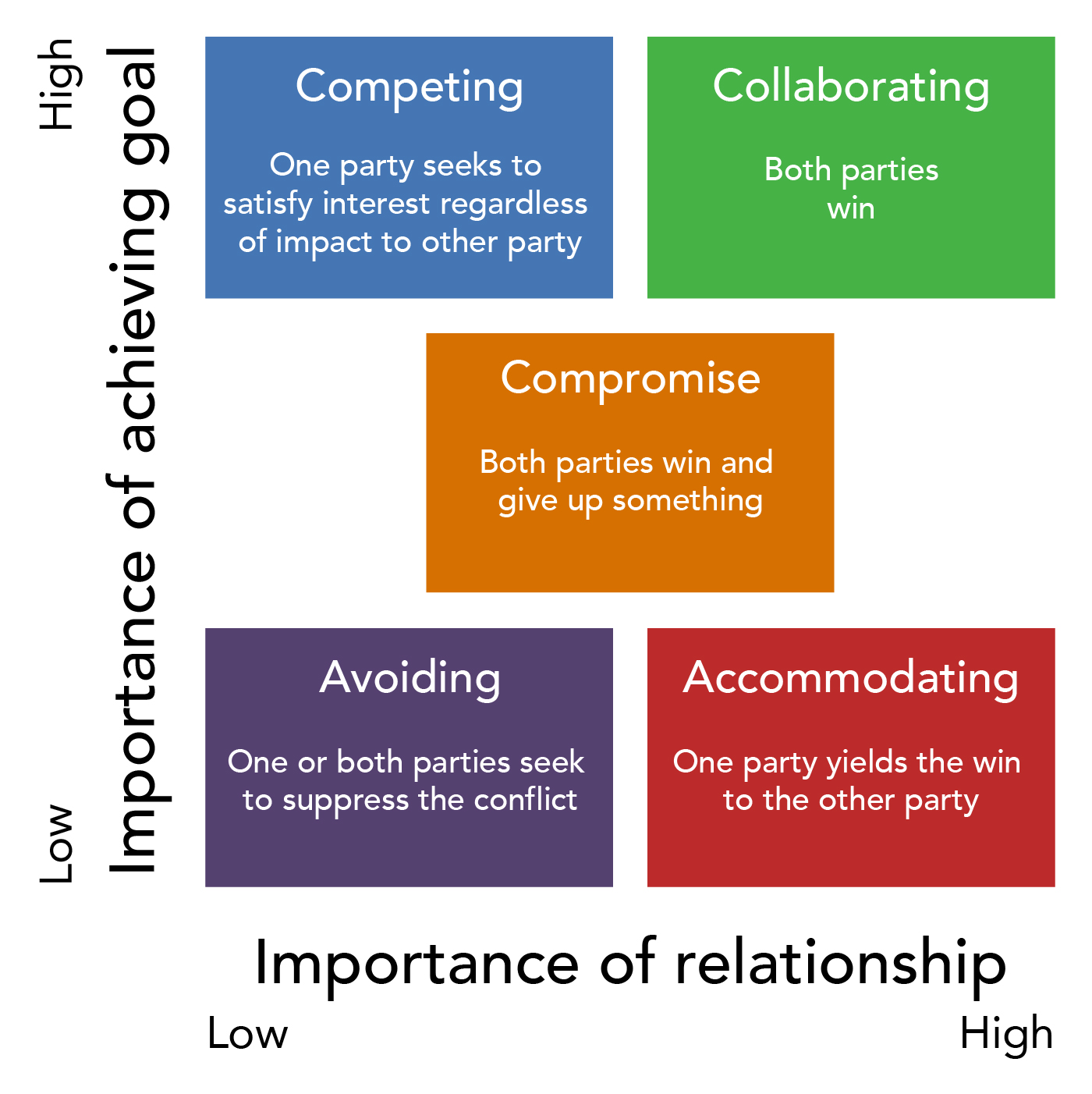Five conflict-handling styles or techniques can be identified:

Avoiding: Turning a blind eye to the conflict will inevitably make matters worse and lead to more frustration and helplessness. In some situations, constructive non-action may however be effective if the issue is not important towards achieving goals or the timing is inappropriate.
Forcing: This technique pushes the leader’s view through with no regard to the other party’s view. This may be a short-term convenient solution but will lead to resentment from the other party’s side with negative consequences.
Accommodating: This style indicates a tendency to accept the other person’s view with little regard for one’s own goal. In some cases, it may be best to accept the other person’s view, but if this is your dominant style, you will always come second when differences in opinion exist.
Compromising: This is a ‘middle of the way’ solution. A compromised solution is not always the best, but it could be expedient and quick when the issue is not critically important.
Problem-solving style: This style is aimed at fully satisfying both parties by building on the views of both. This style is aimed to achieve synergy, which means the end result should be better than the individual opinions. This is possible if the leader listens, facilitates and guides the situation in a calm and structured way, following the six steps of problem-solving:
- Identify the problem
- Gather facts
- Describe the problem accurately
- Identify all solutions
- Select the best solution
- Implement
Click here to view a video for a demonstration of the Thomas Kilman Conflict Modes.
Click here to view the Bibliography for this module.